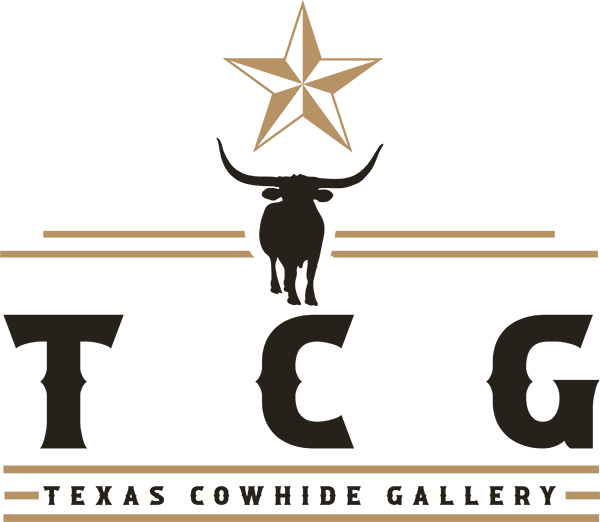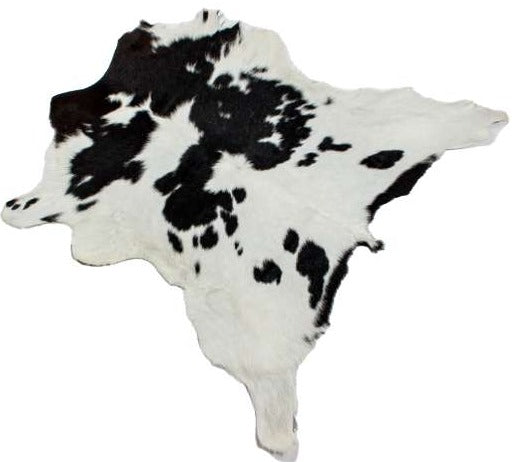Tanning is an age-old craft that bridges the gap between nature and human ingenuity. From ancient civilizations to modern industries, tanning has transformed raw cow hides into valuable leather, essential for clothing, accessories, and functional items. In this article, we will explore the intricate art of tanning, highlighting both traditional methods rooted in history and the exciting innovations that have revolutionized the industry.
The Historical Origins of Tanning
Tanning, the process by which genuine cowhide is converted into durable and versatile leather, has a history that spans millennia and reflects the creativity of human civilizations across the globe. The art of tanning has evolved from ancient techniques rooted in necessity to modern craftsmanship that combines tradition with innovation.
Ancient Beginnings
The origins of tanning can be traced back to the earliest human societies, where the need for clothing, shelter, and protection drove the exploration of ways to preserve animal hides. Primitive tanners discovered that treating animal skins with natural substances, such as plant extracts and animal fats, prevented decomposition and improved the usability of the hides. These rudimentary techniques laid the foundation for more sophisticated methods.
Early Techniques
Ancient civilizations, including the Egyptians, Greeks, and Romans, contributed significantly to the development of tanning techniques. One of the earliest methods, known as vegetable tanning, involved immersing hides in a solution made from tannin-rich plant materials, such as oak bark or chestnut. The tannins effectively bind to the collagen fibers in the hides, creating a durable and robust material.
Another technique, known as brain tanning, was practiced by Indigenous peoples in various parts of the world. This method utilized animal brains and other natural substances to soften and preserve hides, producing soft and supple leather suitable for clothing and other applications.
Medieval and Renaissance Era

During the Middle Ages and Renaissance periods, tanning evolved alongside advancements in trade and craftsmanship. Tanneries became established in major cities, and skilled tanners honed their techniques. A pivotal innovation was the introduction of alum tanning, a process that involved the use of alum salts to achieve lighter-colored leather. This innovation expanded the range of colors and qualities of leather available to craftsmen.
Industrial Revolution and Modern Tanning
The Industrial Revolution marked a significant turning point in the history of tanning. The introduction of machinery, such as the drum and the hydraulic press, revolutionized the tanning process, increasing efficiency and consistency. Additionally, the discovery of chrome tanning in the 19th century, which utilized chromium salts to tan hides, greatly accelerated the process and produced softer leather.
Contemporary Practices
In the modern era, tanning continues to evolve with a focus on sustainability and innovation. Traditional techniques, such as vegetable tanning, have experienced a resurgence due to their environmentally friendly nature and unique aesthetic qualities. At the same time, advances in chemistry and technology have led to the development of synthetic tanning agents and eco-friendly processes that minimize environmental impact and create genuine cowhide products.
Traditional Techniques: Vegetable and Mineral Tanning
Vegetable Tanning

Vegetable tanning is a time-honored method of transforming genuine cowhide into leather using plant-based substances. This traditional tanning process, which has been practiced for centuries, relies on the natural tannins present in certain plants to preserve and transform hides into valuable material with unique properties.
The Basics of Vegetable Tanning
While beneficial, vegetable tanning is a labor-intensive and environmentally friendly process that employs the power of nature's tannins. Tannins are naturally occurring organic compounds found in various parts of plants, such as bark, leaves, and fruits. These tannins have the remarkable ability to bind with collagen fibers present in animal hides, rendering them less susceptible to decomposition while simultaneously imparting strength, flexibility, and a distinctive patina to the leather.
The Tanning Process
- Preparation of Hides:The vegetable tanning process begins with selecting high-quality animal hides. The hides are first cleaned and soaked in water to remove dirt and excess salt. This initial step also rehydrates the hides, making them more receptive to the tanning agents.
- Tannage: Once prepared, the hides are immersed in a large vat filled with a tannin-rich solution derived from plant materials. Common sources of tannins include oak, hemlock, chestnut, and quebracho trees. The hides remain submerged for an extended period, typically several weeks, allowing the tannins to slowly penetrate and bind with the collagen fibers.
- Transformation: During the tanning process, the tannins react with the hides' proteins, undergoing a chemical transformation. This binding action stabilizes the structure of the hides, preventing decay and rendering the material less susceptible to heat, moisture, and stretching.
- Air and Sun Exposure:After sufficient immersion, the tanned hides are removed from the tannin solution and allowed to air-dry. Exposure to air and sunlight triggers a chemical process called oxidation, which further enhances the tanning and curing of the leather.
- Finishing Touches:Once dried, the vegetable-tanned leather is ready for finishing touches. These may include trimming, polishing, and any desired dyeing or staining to achieve the desired color. Over time, genuine cowhide products develop a rich patina that tells the story of its use and age.
Mineral Tanning

Mineral tanning, also known as chrome tanning, is a widely used method in leather production that employs chemical compounds, specifically chromium salts, to convert raw hides into pliable leather. This innovative tanning process, developed in the 19th century, has revolutionized the industry by significantly reducing tanning times and producing leather with distinct characteristics.
Understanding Mineral Tanning
Unlike plant-based tanning methods that rely on natural tannins from plant sources, mineral tanning involves the use of synthetic tanning agents, most commonly chromium salts. These compounds possess the unique ability to bind with collagen fibers present in animal hides, resulting in the transformation of hides into leather that is soft, flexible, and suitable for a wide range of applications.
The Mineral Tanning Process
- Preparation of Hides:The mineral tanning process begins with the selection of high-quality genuine cowhide. These hides are first cleaned and soaked to remove dirt, grease, and any residual salts. Properly cleaning the hides ensures optimal penetration of the tanning agents.
- Tanning Bath: The cleaned hides are then immersed in a tanning bath containing a solution of chromium salts. The hides remain submerged for a relatively short period compared to traditional tanning methods. The chromium salts chemically react with the collagen fibers within the hides, cross-linking and stabilizing the proteins.
- Neutralization and Fixation:After the tanning bath, the hides undergo a neutralization step to balance the pH and stop the tanning process. This is crucial to prevent over-tanning and ensure that the leather retains its desired characteristics. The tanned hides are then rinsed and mechanically processed to ensure even distribution of the tanning agents.
- Post-Treatment and Drying:Following neutralization, the leather may undergo additional treatments to enhance its color, texture, and durability. These treatments may include dyeing, fatliquoring (adding oils or fats for softness), and surface finishing. Once treated, the leather is air-dried or mechanically dried to achieve the desired moisture content.
Modern Innovations in Tanning
Chrome Tanning Advancements

Early forms of chrome tanning were criticized for their environmental impact due to the release of potentially harmful chemicals. However, advancements in waste management, water treatment, and chemical recycling have significantly mitigated these concerns. Modern chrome tanning facilities implement closed-loop systems that capture and recycle chromium-containing waste, reducing the overall environmental footprint.
Manufacturers have now refined the chrome tanning process to achieve greater consistency in leather quality and appearance. Innovations in temperature control, pH management, and chemical formulations have led to tighter control over the tanning process, resulting in leather with uniform color, texture, and properties.
Additionally, these new strategies have enhanced the flexibility of chrome tanning, which allows for a high degree of customization in leather production. Manufacturers can adjust tanning parameters to achieve specific attributes, such as color, texture, and water resistance. This versatility has expanded the range of leather products that can be created using chrome tanning, from elegant footwear to rugged outdoor gear.
Vegetable Tanning Revival
In a world saturated with mass-produced goods, there has been a growing interest in artisanal craftsmanship and products with a unique story. Vegetable-tanned leather, with its distinct textures, rich patina, and connection to time-honored traditions, is a symbol of authenticity and individuality. This tanning technique has withstood the test of time and is now gaining mass popularity once again due to the many benefits it offers.
As environmental awareness gained momentum, consumers and manufacturers alike began seeking more sustainable and eco-friendly alternatives. Vegetable tanning, which relies on natural materials and reduces the use of harsh chemicals, emerged as an appealing choice for those seeking to minimize their ecological impact.
Additionally, vegetable-tanned leather offers a warm and natural color palette that resonates with consumers seeking a more organic and authentic look. This aesthetic, combined with the leather's ability to develop a beautiful patina over time, has contributed to its revival in industries such as fashion, accessories, and interior design.
Hybrid Techniques
Hybrid tanning techniques represent a modern approach to leather production that combines the best of both worlds: the time-tested methods of traditional tanning and the innovative advancements of modern technology. This dynamic fusion of old and new has paved the way for enhanced quality, customization, and sustainability of genuine cowhide products.
Hybrid tanning involves strategically blending different tanning methods to achieve specific outcomes and desired characteristics in leather. By combining traditional techniques with cutting-edge processes, tanners can capitalize on the strengths of each approach, resulting in a leather that is both visually appealing and functionally superior.
The Hybrid Tanning Process
- Selection of Tanning Methods:Tanners begin by selecting the most suitable combination of tanning methods based on the desired attributes of the final leather product. For instance, the process might start with a traditional technique like vegetable tanning to impart natural color and a rich patina, followed by a chrome or synthetic tanning process to enhance durability and water resistance.
- Sequential or Simultaneous Treatment:Hybrid tanning techniques can be executed sequentially or simultaneously, depending on the desired effect. Sequential hybrid tanning involves treating the hide with one tanning method before applying another. Simultaneous hybrid tanning involves combining different tanning agents in a single step, allowing for the benefits of multiple methods in a shorter timeframe.
- Customization and Creativity:Hybrid tanning techniques offer unparalleled opportunities for customization. Tanners can tailor the combination of tanning agents, processing times, and methods to achieve specific color variations, texture, softness, and performance characteristics. This flexibility allows for the creation of unique and specialized leather products.
- Optimizing Efficiency and Quality: Hybrid tanning can optimize the efficiency of leather production by reducing overall processing times. Additionally, the combination of methods can lead to improved leather quality, such as enhanced resistance to water, abrasion, and fading, while still retaining the natural beauty and characteristics associated with traditional tanning.
- Environmental Considerations:Hybrid tanning techniques can also be designed with environmental sustainability in mind. By strategically using traditional methods that rely on natural tannins and minimizing the use of synthetic chemicals, tanners can create leather that aligns with eco-friendly practices and consumer preferences.
Final Thoughts
The art of tanning, a bridge between tradition and innovation, has stood the test of time. From the ancient civilizations that pioneered early techniques to the modern advancements that propel the industry forward, tanning continues to transform raw animal hides into exquisite leather.
If you find yourself intrigued by the world of cowhides, and are on the hunt for genuine cowhide products, feel free to reach us at Cowhide Gallery – a place where nature's beauty is valued and enhanced. From essentials cowhide rugs and calf hide duffel bags to accessories, including cowhide wallets, purses, pillows, etc., we have a massive range of products. Contact us today or explore our website to begin browsing our collections.

